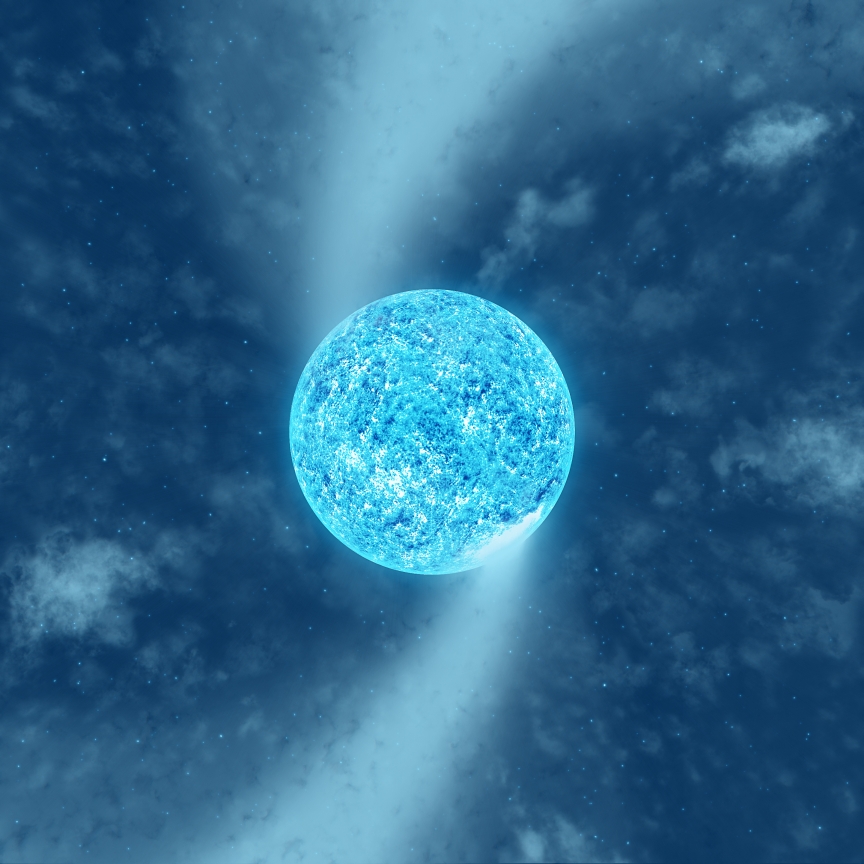A Canadian-led international team of astronomers recently discovered for the first time observational evidence explaining how features at the surface of the hot massive supergiant star Zeta Puppis induce the formation of fundamental structures in its wind.
The research team used the network of nanosatellites of the BRIght Target Explorer (BRITE) space mission - of which RMC Physics and Space Science Department Head Gregg Wade is the Canadian PI - to monitor the visible brightness changes coming from the surface of Zeta Puppis over about six months, and simultaneously monitored the behavior of the wind of the star from several ground-based professional and amateur observatories.
For more information, see the press release at the Center for Research in Astrophysics of Quebec.
 Artist’s impression of the hot massive supergiant Zeta Puppis.
Artist’s impression of the hot massive supergiant Zeta Puppis.The rotation period of the star indicated by the new BRITE observations is 1.78 d, and its spin axis is inclined by (24 ± 9)° with respect to the line of sight.
Image credit: Tahina Ramiaramanantsoa